¶ ShuntMon - SoC% Energy Sensor
Shunt-based precision current measurement module that accumulates current over time. ShuntMon is our second evolution replacing the Sendyne sensor that was used with WatchMon1.
The Batrium Shuntmon is a SOC% monitor that can give you an idea of the state of the battery which isn't possible using voltage alone. Our logic will work without this information but if connected via CANbus to an inverter that does need this information, it may be essential rather than just useful.
ShuntMon works with any of our WatchMon supervisors.
We have a 500A model and a 1000A model:
¶ Characteristics
- Current ± 500 A peak (400 A continuous) 500A model
- Current ± 1000 A peak (800 A continuous) 1000A model
- Maximum Voltage = 650v DC
¶ Features
- Turnkey solution for use in the field
- Typically achieves ±1.0 % accuracy of current measurement
- Resolves currents from 3 mA to 500A
- Low power consumption
- Built-in calibration for current and voltage measurements
- Built-in isolation for power and serial communication
¶ Dimensions
- Width: 115mm (Allow extra room for pluggable connectors and cables at each end)
- Depth: 45mm (width of stand)
- Height: 50mm (based on 500A shunt)
¶ Connect the ShuntMon to the WatchMon Supervisor
ShuntMon works with the WatchMon supervisor and typically comes in your Starter Kit with a cable labelled “yellow”.
CAUTION: DO NOT WIRE THE SHUNTMON COMMUNICATION CABLE BACK TO FRONT AS THIS WILL DAMAGE THE SHUNTMON IN A NON-WARRANTY MANNER.
Connect the cables as per the photo below:
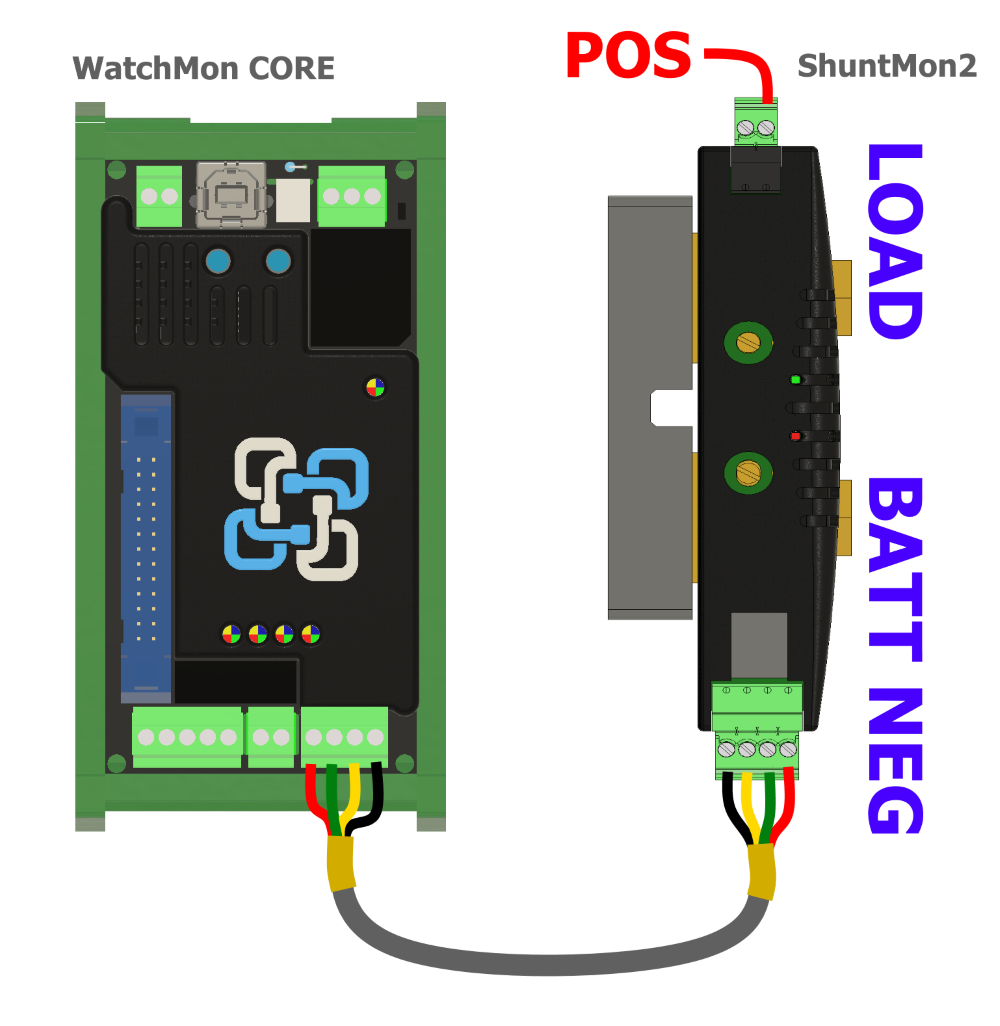
Follow the picture below as the wiring diagram:
- Maximum Battery Voltage = 650v DC
- Current = 500A
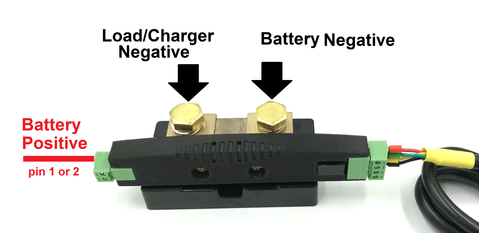
ShuntMon can be connected to any WatchMon using the same wiring sequence.
¶ Connection to ShuntMon
Communication 4 Pin Port:
| Pin | Colour | Function |
|---|---|---|
| 1 | Red | Isolated 5vdc supply |
| 2 | Green | Isolated TX to WatchMon |
| 3 | Yellow | Isolated RX from WatchMon |
| 4 | Black | Isolated Ground |
Voltage Sense 2 Pin Port:
| Pin | Colour | Function |
|---|---|---|
| 1 | Spare | |
| 2 | Red | Battery Positive |
Battery Current Terminals:
| Pin | Function |
|---|---|
| Left | Battery load - to Inverter / Charger |
| Right | Battery Neg - from Cells |
¶ Connection to WatchMon
CAUTION: The Shunt cable / plug should only be plugged into the 4 pin Shunt connector on the WatchMon. Plugging into the CMU of the WatchMon instead should be avoided as this will likely damage the device in a non-warranty manner.
Terminal strip connections are as follows:
| Pin | Colour | Function |
|---|---|---|
| 12 | Red | 5vdc supply |
| 13 | Green | RX from Shunt |
| 14 | Yellow | TX to Shunt |
| 15 | Black | Ground |
¶ Sample in Pictures: ShuntMon Connected to the WatchMon Supervisor

¶ Sample in Pictures: WatchMon + Expansion Board (Din Rail Mount)

¶ ShuntMon Versions and Configuration
The version of your ShuntMon should reflect the configuration of the Shunt on your software.
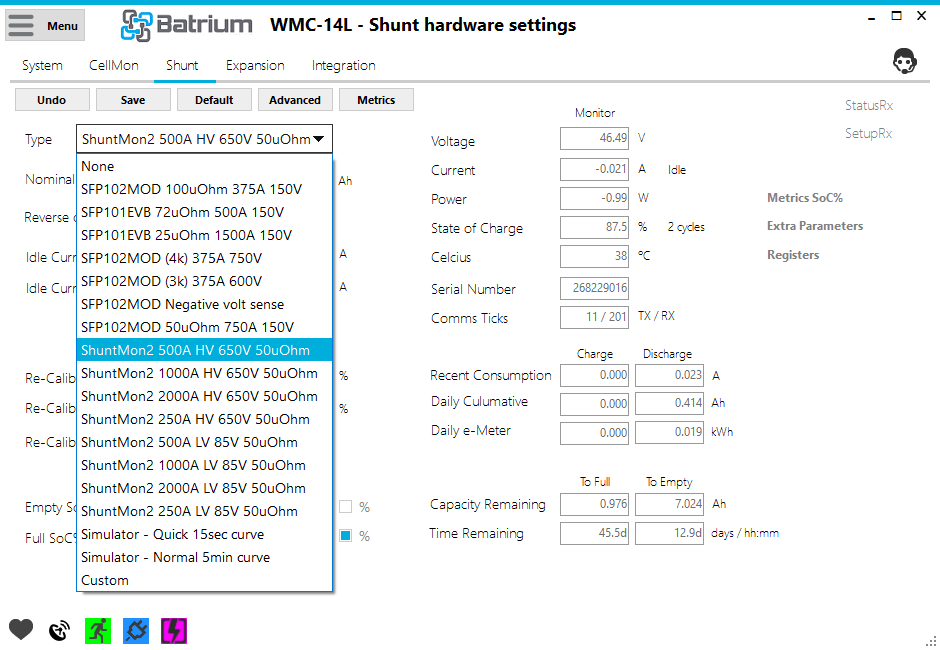
There are two versions of the ShutMon:
¶ ShuntMon Rev2.3
It has the labels HV and LV (high voltage and low voltage) on the left and BAT on the right. Make sure that you adopt the same for software configuration and terminal pin.
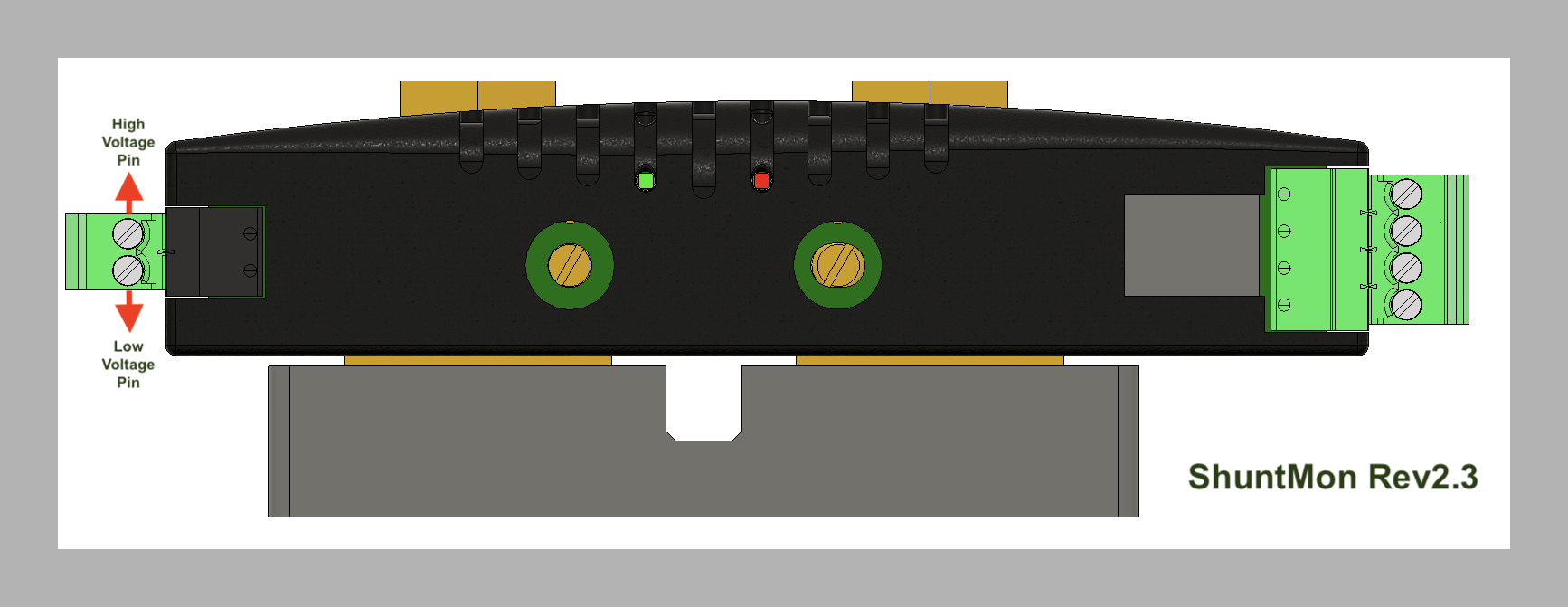
¶ Shuntmon 2.1 and 2.2
These are only available as high voltage (HV) (either pin) and need to be configured from the software.
¶ FAQ: Can we use our own shunt block?
A ShuntMon is made up of a Shunt Block and a ShuntMon2 Circuit Board.
The Shunt block is +/-0.5% tolerance while the Shunt PCB components are +/-1% tolerance. We then apply a 10-part setpoints process to calibrate the combined device for both the block and PCB to match our calibration equipment loads. If you separate the two, the values would be useless. They work as a pair assembled as a whole unit. Without the matching block, it wouldn't work.
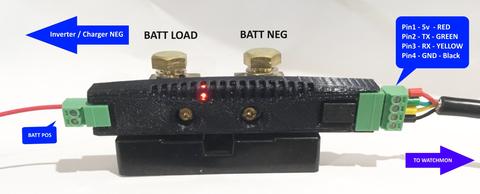
Yes, you can use your own Shunt Block but be aware this will cost more than using the Shunt Block that comes with your ShuntMon.
The calibration of the ShuntMon when attached to a specific Shunt Block before it is sent to a customer ensures that the results you get from your Batrium shunt are accurate and reliable.
We have found this necessary as the manufacturing tolerances we can achieve on the Shunt Block are extremely variable. The cost of the Shunt Block is only a minor part of the cost of the ShuntMon2.
Changing the Shunt Block the board is attached to means that a new calibration would be necessary. If you require this, we offer calibration service.
¶ Calibration Service
We have had customers who require a custom shunt block in the past e.g. 1500A. This is typically what would happen:
- You would need to send us the Shunt Block you wish to use.
- We do the 10-point calibration with your Shunt Block attached.
- Send them back as a pair.
Service fees and shipping charges will be covered by the customer.